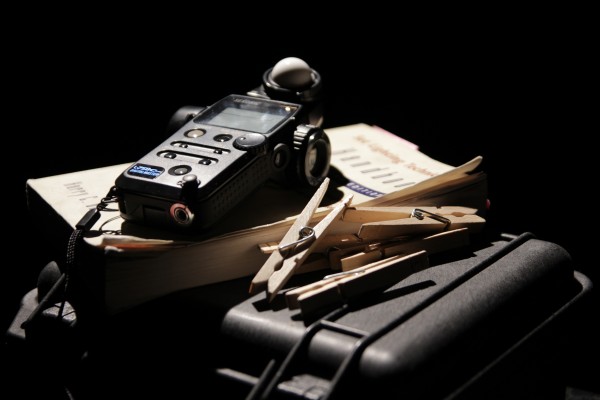This is an in-depth blog breaking down Working as a Gaffer in film and television. Please comment below. As a reader it is your responsibility to help us make this post better! What is it missing? Have any questions?
What Is A Gaffer?
The Gaffer (gaffer definition) (Chief Lighting Technician) is the Lighting Technician on a film set that is responsible for the execution of the cinematographer’s lighting plan. He or she works directly with the cinematographer and runs the lighting crew to achieve the look of the film the DOP is going for. Being the gaffer is not a job to take lightly and all gaffers should strive to always be learning and on top of the latest equipment and technology.
It is a very stressful and difficult job, but is also extremely gratifying and can pay very, very well.
Firstly, The Set Lighting Technicians Handbook is your bible. No joke. Book stores don’t normally carry it, so buying it on Amazon.com is the easiest way of getting it. Read it and have it with you on set. It is an amazing aid for learning about gear, trouble shooting, general reference and a fantastic read when baby sitting a light in a lift all day.
Working as a Gaffer:
Responsibilities
- The Gaffer executes the Cinematographers lighting plan.
- Run the Lighting Crew. With help from the best boy you run the rest of the lighting technicians to run power, set lights and pre-light up and coming scenes and/or sets
- Electrical Safety. The gaffer and/or the genny op are responsible for electrical safety on a film set. On smaller sets where there is no Generator Operator the gaffer is solely responsible for electrical safety.
- Attending pre-production meetings, scouting locations and general prep for the project. Meet with the DOP and Key Grip to discuss the lighting approach to the film and each scene individually and decide what lighting and equipment is necessary.
- Think ahead and keep an eye out for any problems that may arise. This includes having fixtures standing by for close-ups, relight and solving issues before or as they arise.
- Act as a second pair of eyes for the DOP. As the scenes and/or sets are being lit, the gaffer must act as a second pair of eyes for the cinematographer. When rolling you must look for stuff like ugly shadows, hot spots, over and under exposure, or inadequate light.
- Look for any opportunity to make the scene look more interesting. This is difficult and a little touchy as some DOPs prefer a gaffer who will only execute their plan. As you gain experience and build a relationship with a cinematographer and begin to understand their preferences or have a good idea of what the scene calls for this will become easier.
Skills
- The Gaffer Needs Creativity. Being a gaffer involves an amazing combination of creativity and technical skill, but creativity is very important. You might need to do something out of the ordinary or come up with interesting solutions on the spot.
- High level of technical skill & knowledge. You need to know how to use all the gear and be able to get to most out of fixtures in any number of situations as well as have a basic understanding of cameras, ISO’s and latitude.
- Strong problem solving skills. Often times lights will break down or things will happen beyond your control where you will need to figure out a solution for something or give a cinematographer various options based on the gear that is available.
- Strong communication skills. You must communicate clearly and give solid instructions to the people working under you. All it takes is mixing up a couple of words and you can completely misdirect your team and waste a lot of time. Learn to communicate effectively.
- Fast decision-making. So much of being a gaffer is internalizing a large amount of information and making quick decisions based on that information.
- Patience & tact. Often times you will be dealing with slow departments and crew members or having to discuss and ask for things from other departments. Patience and tact is a must.
When lighting a scene the cinematographer will decide placement of each fixture to meet the desired look. The DOP may express what they’re going for in several different ways, this includes anything from very specific instructions that must be followed to a T
Example: I want to key with a t12 into a claycoat coming back through some light grid at an f2.8 from here and a 4k with a stipple lens as a backlight at a f5.6 from back there.) to very broad set instructions that the gaffer will have to translate into the right fixtures (e.g. I’m thinking a large, warm, soft source here and a cooler hard back light there). Either way as a gaffer you must have a very solid understanding of the gear and how to get the most out of it based on different situations and sets of instructions.
Even though the cinematographer is responsible for the overall lighting and look of a film as the gaffer’s relationship with various cinematographers grows they may be given more or less latitude depending on the situation. In some situations depending on the size of the production the gaffer will be allowed to light the backgrounds, add last-minute lights or act as a second unit DOP.
Pouches and Set Tools
Three easiest places to get Pouches, Belts and Tools:
- Local Hardware Store
- Amazon.com
- Filmtools.com
Although above I link to general pouches I do think Rip Offs make the best pouches for grip and lighting technicians. You can find RipOffs Tool Pouches on Amazon.com as well as Film Tools.
Now the tools that will fill that belt:
C-Wrench
8 or 10 inch crescent wrenches work best. If trying to be light weight look for a 6inch crescent wrench with an extra wide jaw
Wrench on Amazon
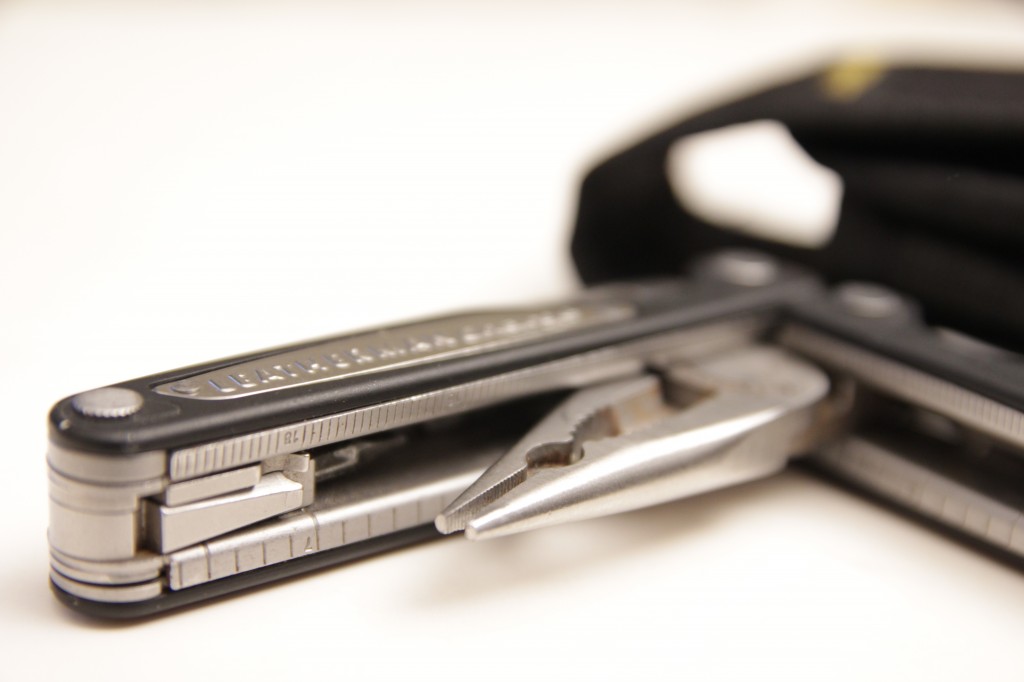 Multitool (Leatherman)
Multitool (Leatherman)
Leatherman is just about industry standard. Feel free to purchase a lower end multitool if you don’t want to spend too much, but be sure it can do everything you need.
Multi tools on Amazon
Screw Driver
You might be doing rewiring, or god knows what on set. Picquics are the best because you can put the bit in a drill.
Screw Driver on Amazon
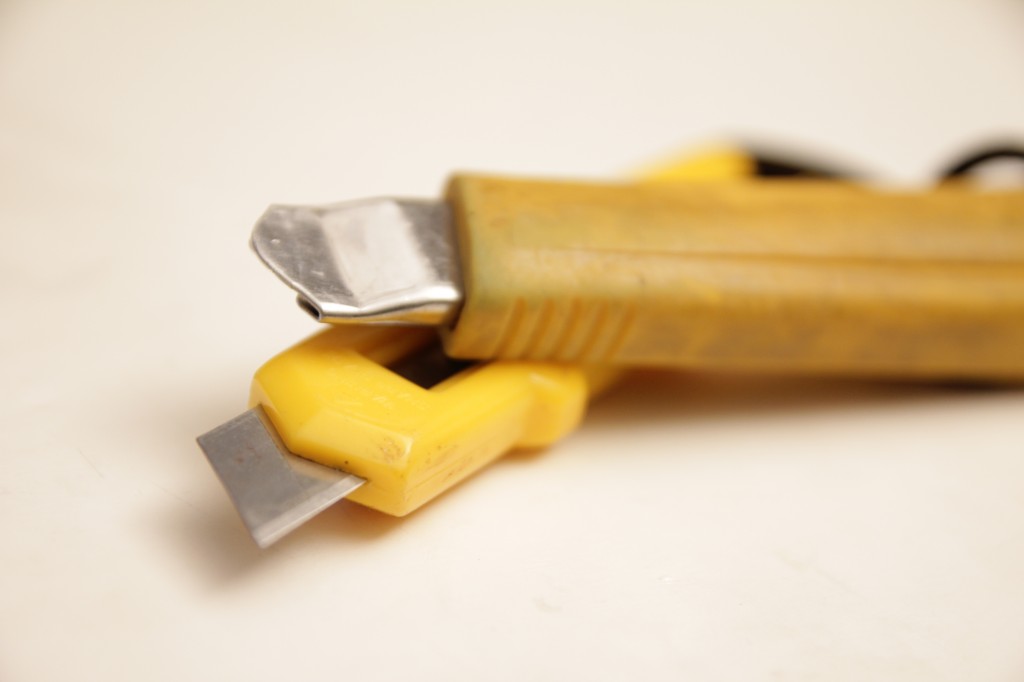 Knife
Knife
You’ll be using a knife everyday on set, so be sure to get some extra blades for it. Be careful though, they are razor sharp!
Knife on Amazon
A Line Tester/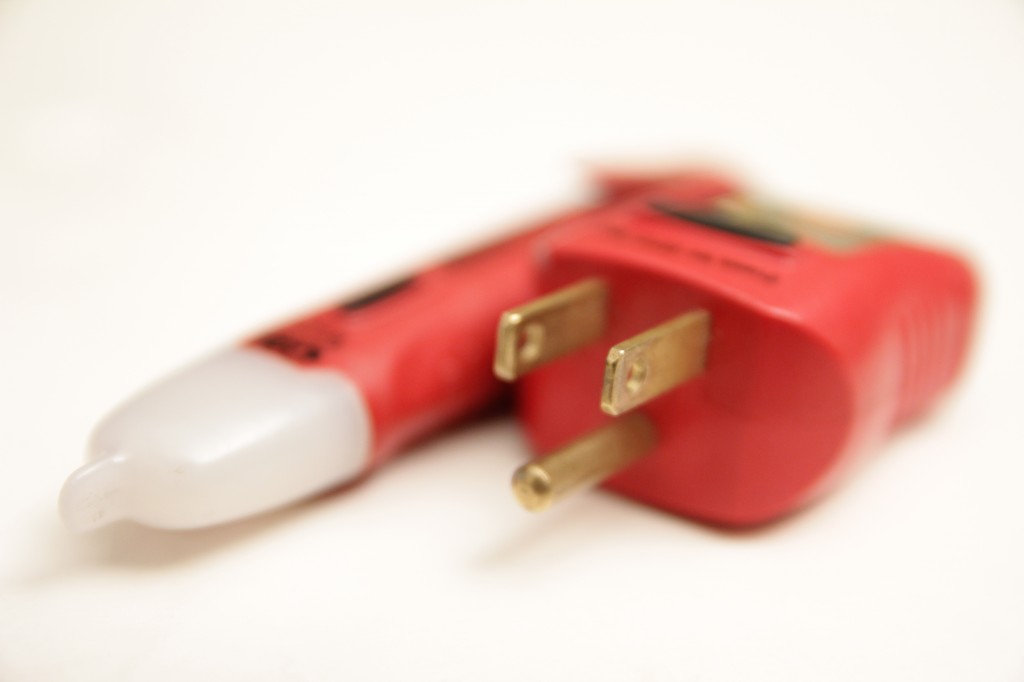 Circuit Tester
Circuit Tester
A line tester will show if a wire has a current flowing through it. Great for quick trouble shooting. A circuit tester plugs in to an Edison and tells you if its hot, it will also let you know if the ground is correct and polarization. Spend a little extra and get one with the GFCI tester built-in. A must have for every Gaffer.
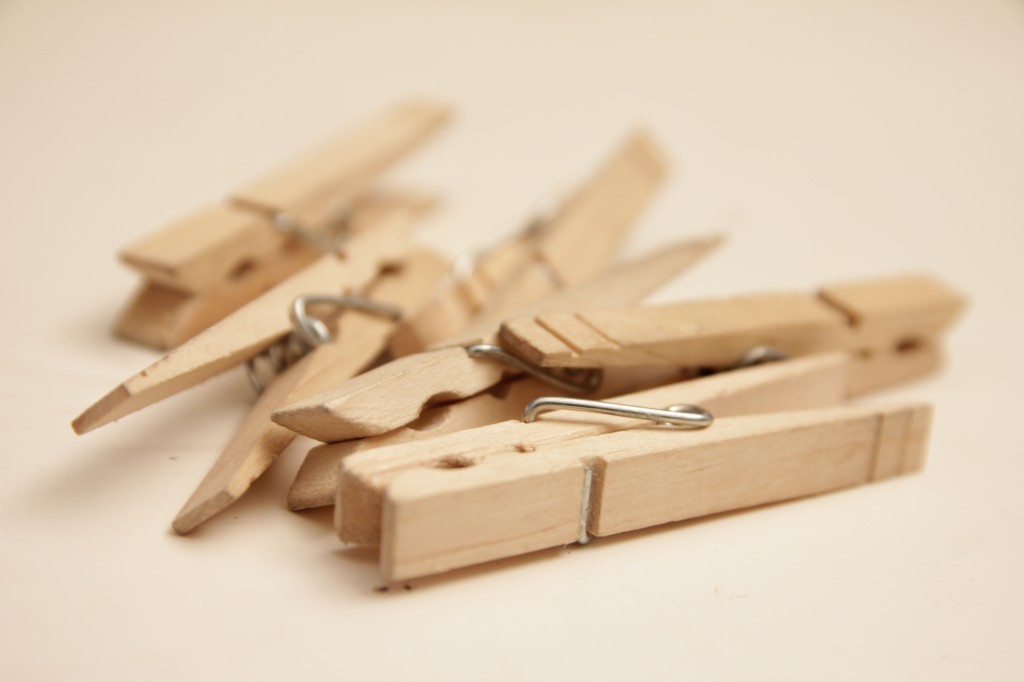 Clothes Pegs
Clothes Pegs
C-47s, Clothes Pegs, bullets, what ever you call them. Did you know you can pull one apart and use for very tiny precise leveling or flip them backwards (c-74) and use them to pull scrims out of lights? Pay a little more and get the heavy-duty ones, it’s worth it.
Cube Tap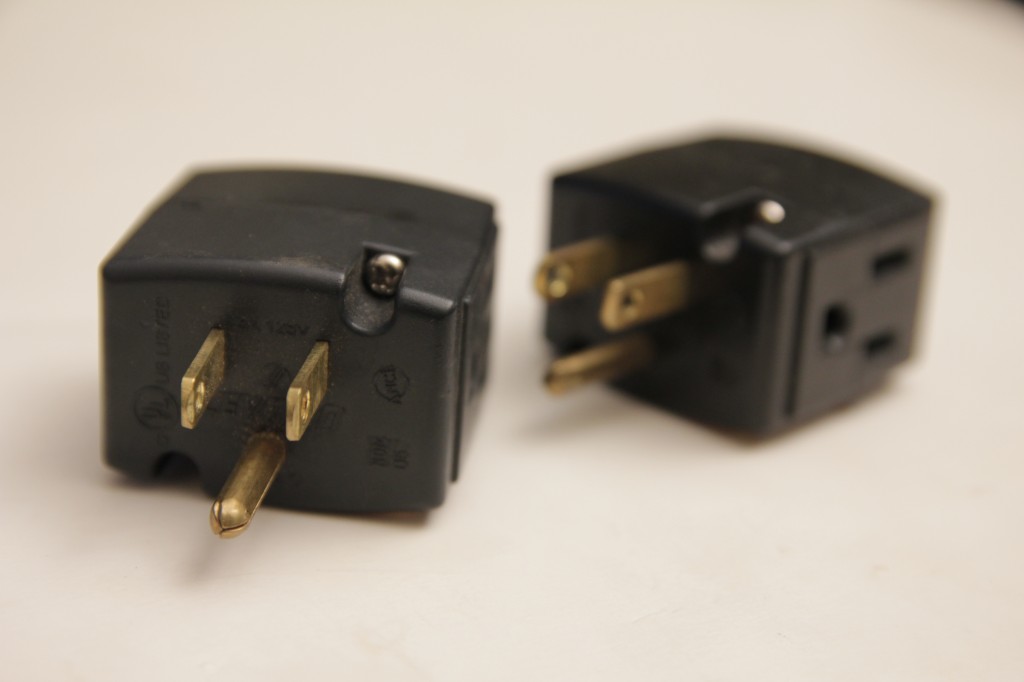
Used to split a line of AC into 3 U-grounds, these are extremely handy. Stay under 15amps though, you don’t want to melt it! Package trucks will carry these, but it doesn’t mean you shouldn’t have some with you at all times. Label them with your name or initials, but be sure to collect them at the end of the day.
Cube Taps on Amazon
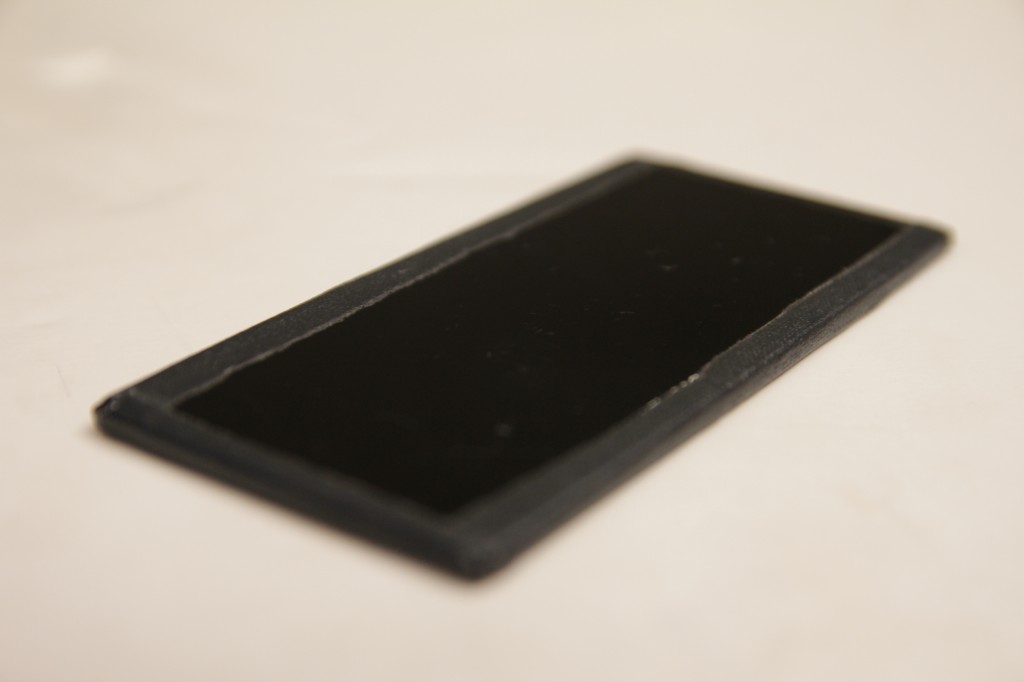 A Viewing Glass
A Viewing Glass
Not completely necessary to be a 3rd or daily, but very handy for a gaffer when aiming a light of trying to spot the suns position on a day exterior. If such an item is out of your budget a fantastic solution is a welder’s glass.
Viewing Glass on BHPhoto Video
2 inch black paper tape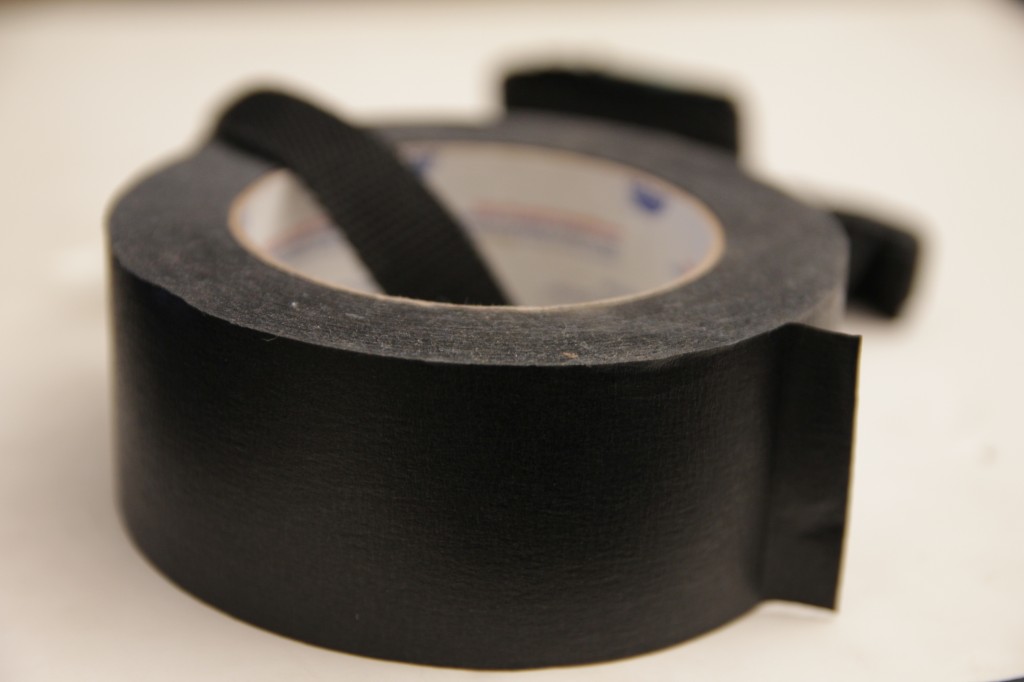
It didn’t make the main list of bonus because it is considered an expandable and is usually provided on most jobs. Clothes pegs are also an expandable, but they are so important to the job that they had to make the main list.
Black 2inch Paper Tape on Amazon
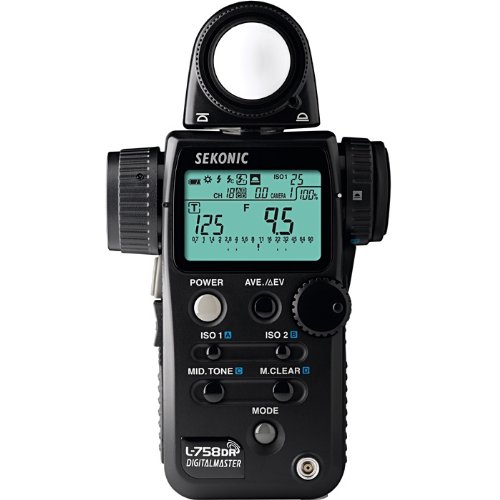 Light Meter
Light Meter
Not all DOPs will ask their gaffer to take meter readings for them, but it’s great to have if you need to make sure a light is at a certain intensity, match exposures after replacing a fixture or even if the DOPs personal meter fails.
Sekonic L-358 Light Meter on Amazon
Sekonic L-398A Light Meter on Amazon
Sekonic L-758Cine Light Meter on Amazon.com
The New Sekonic 401-479 LITEMASTER PRO L-478DR on Amazon
Litemaster Pro L-478DR Light Meter on BHPhoto Video
Prep & Production Meetings a a Gaffer
Sometimes the Gaffer & Best Boy will be given a couple of days or even weeks of prep for the project. This time is needed to do several things that will make your life easier while on the project.
- Read the script! Take notes and highlight any questions, concerns, lighting ques or effects! I can’t stress it enough, read the thing and reread as necessary. Ideally you would read it before the tech scout, but that might not always be possible. What I like to do if I can: read before scout, read after scout when doing more prep and then I like to reread the pages we are shooting the night before shooting or morning of.
- Watch any look references given to you by the cinematographer or anything the Director and Cinematographer are discussing. Sometimes the director might have a particular film or scene in mind or the cinematographer might want specific scenes to have a certain look. Part of your job as the gaffer is to help them meet these looks, so be sure to brush up on anything that is a look reference.
- Further discuss lighting approach with the Cinematographer. Based on your tech scouts, look references and script reading have further discussions with the DOP. Discuss the look and feel of the film and scenes individually. Feel free to make overhead diagrams as necessary.
- Attend any necessary production meetings. This is your chance to bring up any concerns and further discuss things. You will usually go over the entire schedule and discuss every day of shooting with all the keys present. Bring up anything that is a concern to you, discuss extra time for cable runs, more man power, special rigging, anything that you think will make your life on the day easier or anything production or other departments need to be aware of.
The Tech Scout as a Gaffer
Tech Scouting is a very important process for any department in the prep stage for a project, especially lighting. it is very important that the gaffer attends all tech scouts. The tech scout is your opportunity to get an idea of how and where the scenes will play out, ask questions and coordinate with other departments or crew members.
As a gaffer and best boy electric there are some very specific things you need to look out for during your tech scout.
- Discuss lighting approach with the DOP. Make diagrams, lists and take notes as needed
- Make equipment lists or make sure package truck lists meet your needs
- Figure out cable runs & find safe places for 4As, diefs etc.
- Determine genny and/or truck placement
- Special Equipment requirements & Discuss rigging requirements, including lights, special stands, scaffolding, aerial lifts etc.
- Equipment staging area
- Potential sun locations. Will the sun be blasting in through a certain window all morning?
On Set as a Gaffer
When you arrive on set for your first day of shooting make sure you’re a little early. Being there 10-15 minutes before call time is something you should always aim for as a crew member, but I think this is especially important on day one. Instead of 10-15 aim for 20-30, introduce yourself around, have breakfast and get ready for what will usually be a very tough and stressful day.
If you happen to have a pre-call get a crack on your cable run right away, usually the genny op would have begun it and powered the other departments that need it, but you’ll definitely need to get power to the set and near any exterior fixtures, so get going.
When call time hits, report to the Cinematographer while the people under you are running cable and/or pulling fixtures. If possible have them quietly work through the blocking.
There will either be a blocking right away or up to an hour after call. If it doesn’t happen right away get back to work, if it does here’s what to look out for:
- Actors movements. This will give you a good idea of where you’ll need to light. Based on the actors movements you’ll get a good idea if you have to move any lights outside and where the key light might end up.
- Watching for any problems that may arise. Are the actors stacked weirdly? Super close to each other of far back? Will one actor shadow another? ETC.
- Safe places to run cable or hide cable. You might get lucky and be able to use set dressing to hide cable. If necessary and you have no other option you can ask Art Department to help you hide some cable.
- Existing practical lamps. I love practicals and so do a lot of DOP’s. Look out for them, sometimes the art department will just put them out because they look nice. Get them powered, throw in a bulb and put a dimmer on it. Even if it doesn’t get used, it’s still great to have it ready for when the DOP suddenly decides they want it on.
When the blocking is done discuss the lighting with the cinematographer. Delegate their instructions and start lighting the scene. When the scene is lit there should be a rehearsal before you begin shooting (block, light, rehearse, tweak, shoot). Watch the rehearsal and make any necessary changes to the lighting. When they begin to roll be sure to watch the takes if possible. Keep an eye out for anything bad or something you think the DOP won’t like. Sometimes you’ll notice something that was overlooked.
Example: The actor leaves the room and there is no light hitting them from the other side as they walk through the door. The next scene takes place in a bright room, so they should be walking into some sort of light source.
If you know your DOP well enough call for the light you think they would like over the walkie (if you have one) and ask the DOP if they want it as your guys are bringing it over. If they say “no” you can cancel the order, but if they says “yes” it’s already flying in.
This is touchy, but if you have a decent relationship with the DOP and are unable to get their ear to ask, just set it up, turn it on and ask what they think. If they hate it they’ll tell you, if they like it you’re a hero.
It’s all about Film Lighting at the end of the day:
When it comes down to it, the gaffer’s job is about light. You must have an immense passion for filmmaking, lighting and cinematography to succeed as a gaffer.
To Aspiring Gaffers out there:
I hope this post helps all the aspiring gaffers out there, I know I wish I had a resource like this when I was first starting off. Being a gaffer is an amazing job, it can be incredibly stressful, but with that stress comes a lot of gratification. Enjoy.

